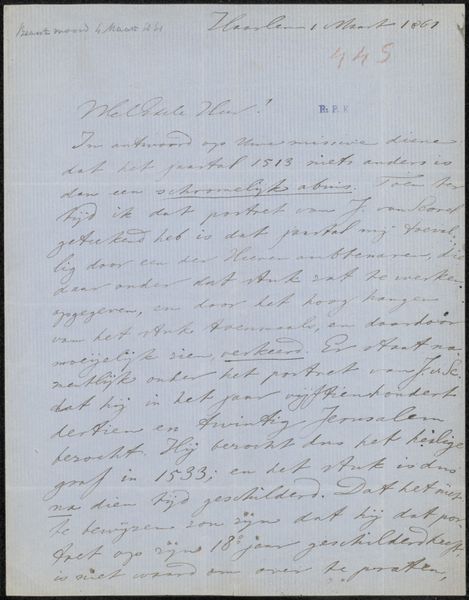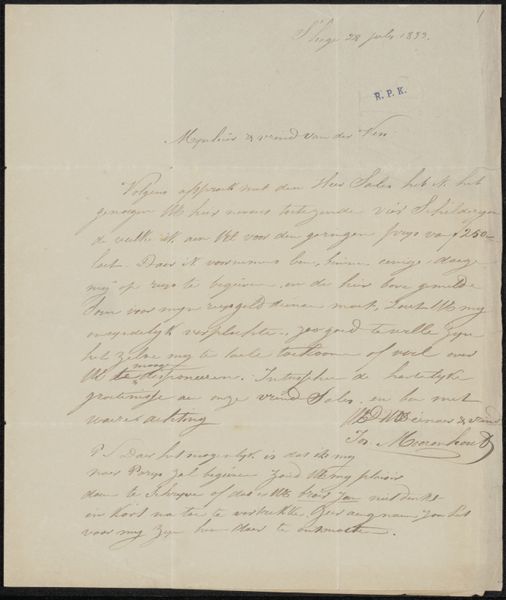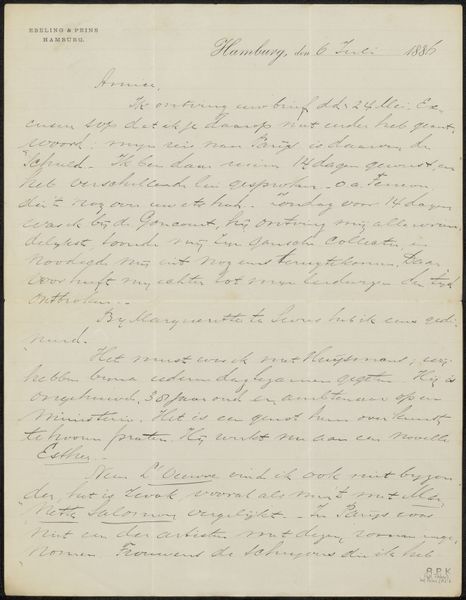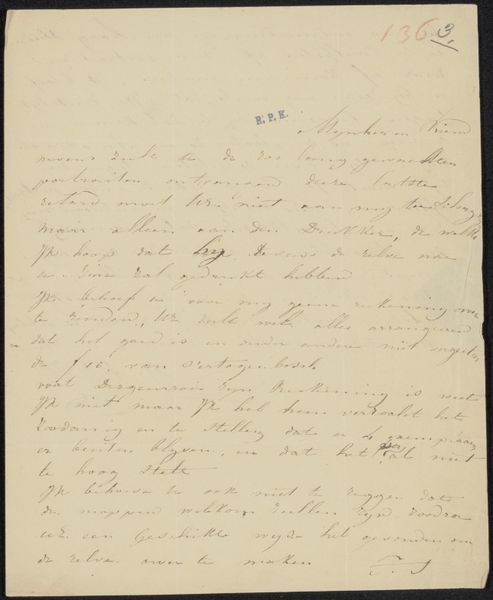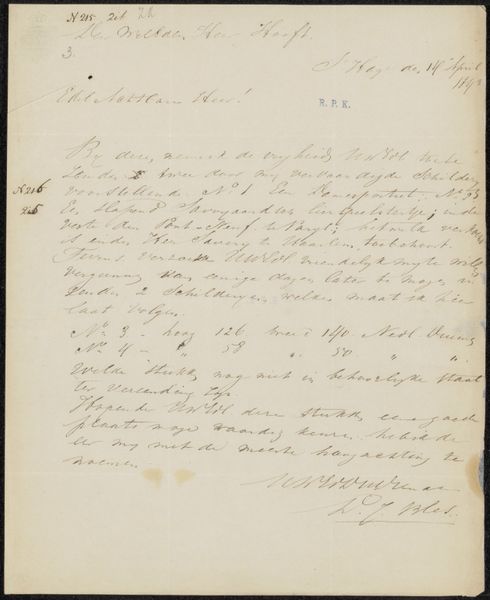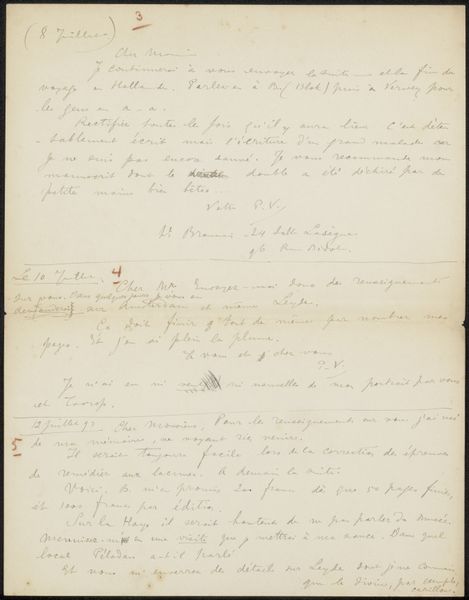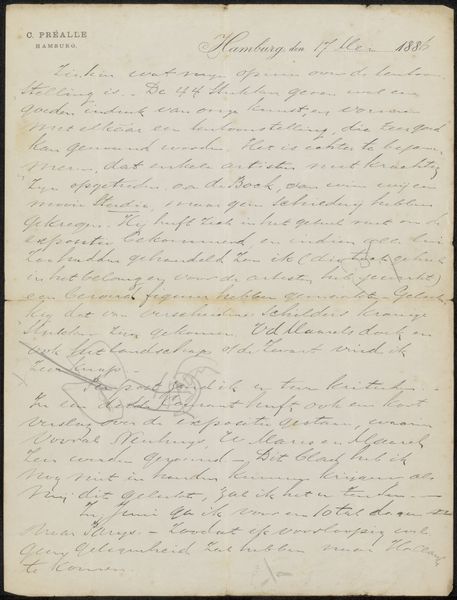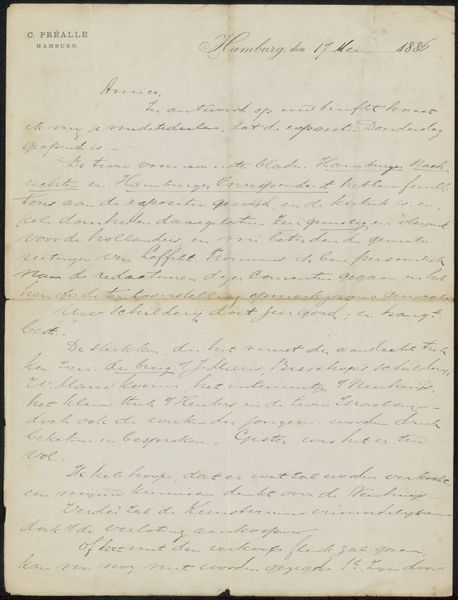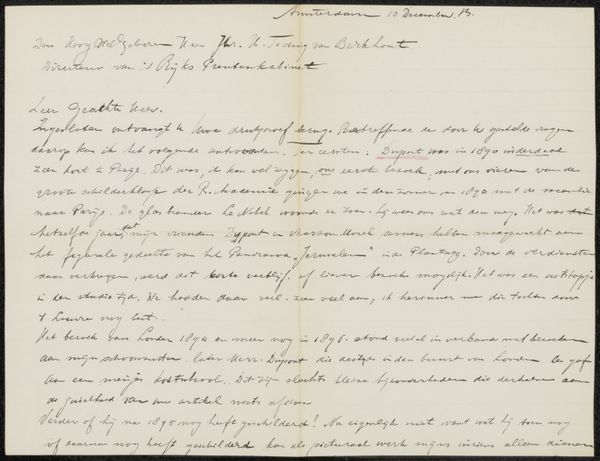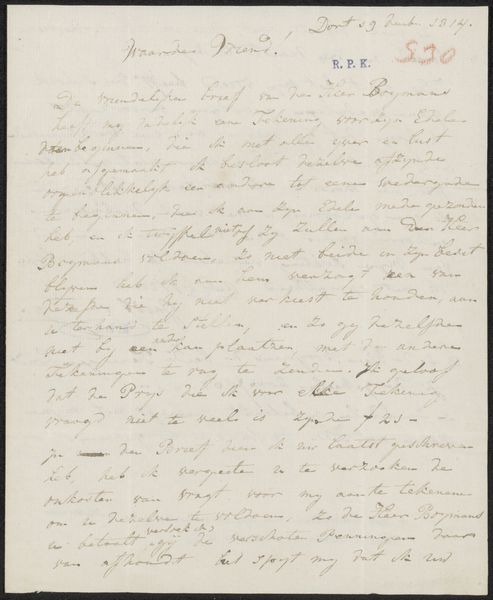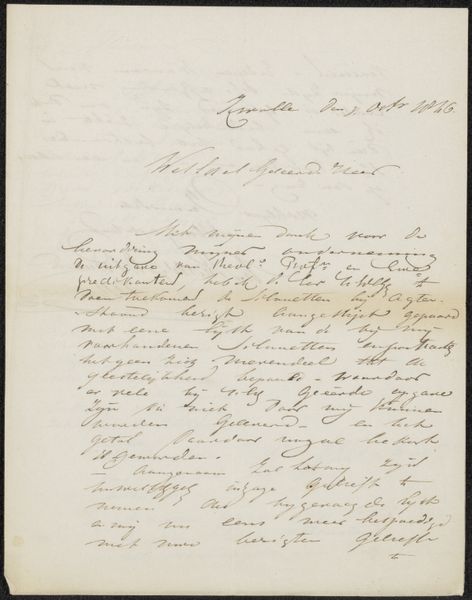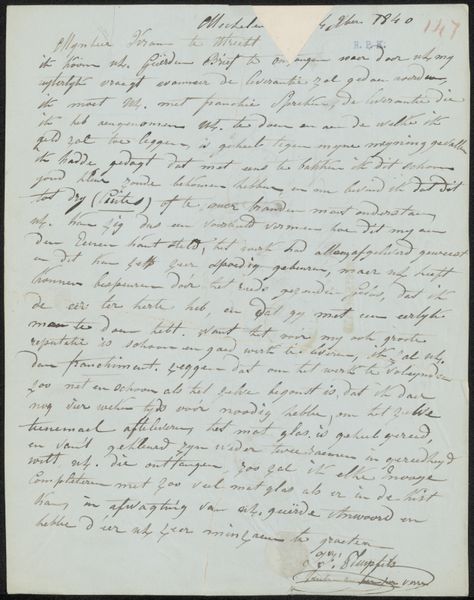
Copyright: Rijks Museum: Open Domain
Curator: We’re looking at "Brief aan Philip Zilcken" here, penned by Paul Verlaine. Its creation is estimated between 1893 and 1897. The Rijksmuseum holds this drawing, a study in ink on paper. Editor: My goodness, it feels like peering into a ghostly confession. The script shimmers, fragile as moth wings against the creamy paper. I imagine Verlaine hunched over it by candlelight. Curator: Indeed. The medium itself conveys intimacy. See how the ink bleeds ever so slightly, giving a warmth rarely found in printed documents? Its romantic aesthetic also speaks volumes about Verlaine’s emotional landscape at this time. Editor: Yes, there’s a certain drama to it! The letters dance across the page—the ‘f’s particularly whimsical. I sense a whirlwind of thought trying to be tamed by the constraints of ink and quill. It almost makes me breathless just looking at it. Is it me, or does the calligraphy teeter on the edge of chaos? Curator: While it appears spontaneous, I observe considered placement. Each stroke works in conjunction with another to facilitate a whole. The composition seems consciously crafted. Moreover, considering it's a letter, it naturally assumes a somewhat restrained posture for readability. Editor: Maybe, but I sense passion over precision here. Knowing Verlaine's turbulent life only amplifies that feeling. It's a raw emotional outpouring disguised as mere correspondence. Even knowing I can’t read the text adds to that mystique. Curator: A fair reading. This particular artwork provides access to Verlaine’s humanity, which many find more immediate than printed poetry. I agree the romantic hand gives texture to raw emotion. Editor: For me, it transforms a mundane moment, an old correspondence into something that deeply touches the soul. Its inherent humanity remains startlingly contemporary even a century and more later.
Comments
No comments
Be the first to comment and join the conversation on the ultimate creative platform.
